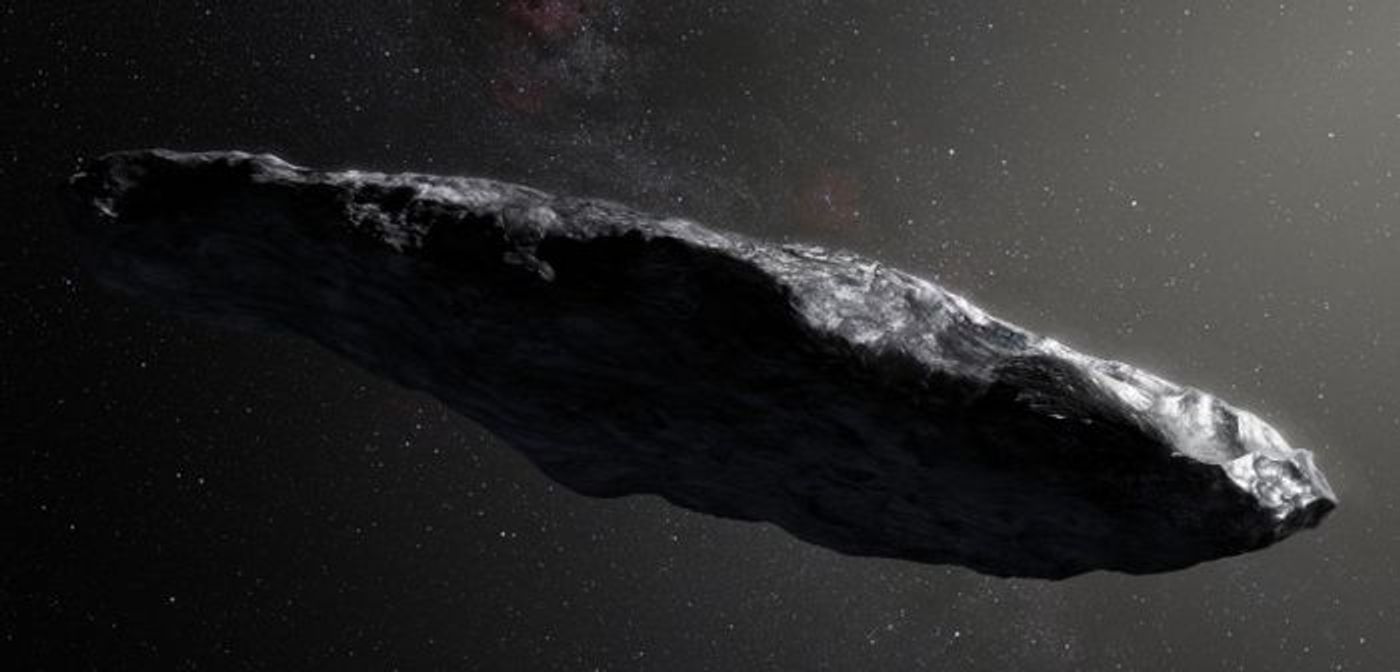Was Oumuamua Just An Interstellar Hydrogen Iceberg?
If you were following space news outlets back in 2017, then you likely heard about the particularly odd cigar-shaped space rock that zipped in and out of our solar system. Later nicknamed Oumuamua, this space rock was determined to have interstellar origins, but identifying its true nature is a continuous challenge even to this very day.
Image Credit: ESO/M. Kornmesser
As a result of Oumuamua’s strange shape, unusual accelerating tumble, and atypical composition, astronomers went back and forth in an attempt to discern exactly what the object was. Some called it an asteroid, while others called it a comet; some astronomers even went as far as to call it an alien spaceship. But Oumuamua didn’t really fit any of these categories, and a new paper published in the journal Astrophysical Journal Letters appears to offer a compelling new view.
So then, what exactly was Oumuamua? According to the paper, Oumuamua could have been a massive hunk of hydrogen ice akin to that of a stellar iceberg. Oumuamua’s origins appear to trace back to an enormous molecular cloud, which would effectively be giant stellar nursery measuring several light-years across. Stellar nurseries contain enough hydrogen gas to form countless stars, and sometimes that gas can be ejected in the form of solid frozen bodies like Oumuamua.
"We show that it was likely composed of hydrogen ice," explained Yale University’s Greg Laughlin, a co-author of the paper. "This is a new type of object, but it looks like there may be many more of them showing up going forward."
Related: What was Oumuamua actually made out of?
The idea may seem a bit out of this world (pun intended), especially since hydrogen has such an impossibly low freezing point of -450º Fahrenheit. But molecular clouds like the one discussed in the aforementioned theory are some of the only areas in the universe capable of reaching these frigid temperatures, and it seems as if a solid hunk of frozen hydrogen like Oumuamua would have needed to originate from one.
“Even though the hydrogen iceberg thing is a little exotic, it explains every single mysterious thing about ‘Oumuamua,” added Darryl Seligman, the paper’s lead author, also from Yale University.
Assuming the theory is correct, then this would allegedly explain Oumuamua’s strange behavior. Astronomers witnessed as Oumuamua slowly accelerated and became more elongated in shape over time as it whizzed past the Sun. This would have been a direct result of having its own hydrogen ice simmered from its surface by the Sun’s heat, and it further supports the notion that Oumuamua was a solid frozen hunk of hydrogen.
While Oumuamua is a significant mystery, one thing remains certain: Oumuamua isn’t the only one of its kind, and it seems plausible that that there could be several more objects just like it read to enter our solar system at any time. We can only hope that astronomers will be ready to observe them when they do, as this will be the key to identifying their composition and origins.
Source: Space.com, Wired, Astrophysical Journal Letters









